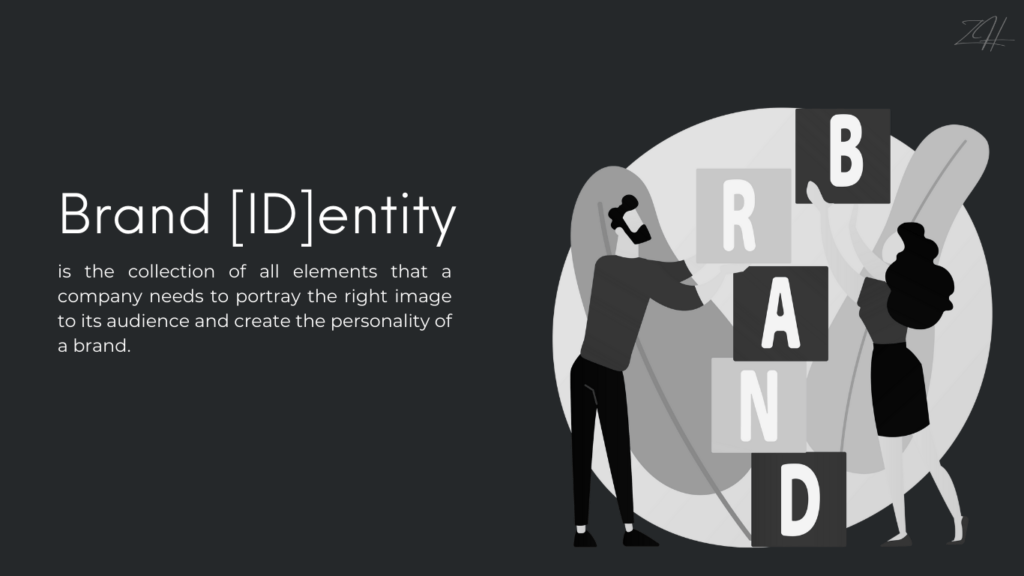
10 Important Steps To Build A Strong Brand Identity
In a crowded market, it’s important for your business to have a strong brand personality. It shows what your business is all about and affects how people see it, how loyal they are, and how much they trust you. Here are ten important things you can do to make your brand personality strong and lasting.
1. Figure out what your brand is for:
The goal of your brand is what your brand identity is structured around. It solves the most important question: Why is your brand important? Figuring out and saying out loud what the purpose of your brand is can help you connect with your customers more deeply, building trust and love. Make sure that the purpose of your brand fits with the mission and values of your business. This will help your brand stand out.
2. Know who you're writing for:
To build a strong brand personality, you need to know exactly who you’re trying to reach. Find out what the market wants, needs, and hurts by doing in-depth study on them. You can create a more personalized and successful brand experience by making your brand identity fit the people you want to reach. You can make your brand more relatable and memorable by making messages and pictures that speak directly to your audience.
3. Give your brand its own voice:
The way you talk to people related to your business is called “brand voice.” It shows what your company stands for and who it is. It’s important to be consistent with your brand style, whether it’s formal, friendly, or fun. A consistent and unique brand voice helps your message stand out from others and makes your business more recognizable. Make sure that your brand voice fits with your general brand identity and speaks to the people you want to reach.
4. Come up with a memorable logo
People often think of your image as the first thing they see when they think of your brand. It should be easy to remember, simple, and show what your business stands for and how it acts. Logos that are well-made help your brand stand out and make it easier for people to remember your business. Take advantage of professional design services to make a mark that looks good and can be used on a number of different platforms and media.
5. Choose a color scheme that you stick to:
Colors are a big part of how people recognize a brand. They make people feel things and think of things that can change how people think about your brand. Pick a color scheme that fits the personality of your brand and speaks to your audience. Once you’ve chosen them, make sure that all of your marketing tools, like your website, social media pages, promotional items, and packaging, use the same colors. Using the same color over and over again helps people remember your brand and builds your general brand identity.
6. Make brand elements that go together:
For a strong brand identity, you need more than just a logo and color scheme. You also need fonts, imagery, and graphic styles that work well together. To make your brand look unified and easy to recognize, these features should be used in all of your marketing materials. Make brand rules that explain how to use these parts in different situations. This makes sure that everyone who talks about your brand stays consistent, which is important for building a strong brand personality.
7. Write an interesting brand story:
A compelling brand story gives your business a face and helps people connect with it on a deeper level. It talks about your brand’s history, what it stands for, and how it’s different from others in the same field. Your brand story should be real, interesting, and in line with the purpose of your brand. Share your brand’s story on your website, social media, and in your marketing efforts to connect with your audience on an emotional level. A well-told brand story can make your brand more recognizable and help you connect with people in a way that lasts.
8. Make sure that all touchpoints are consistent:
To build a strong business identity, you need to be consistent. All of the places a customer interacts with your brand—website, social media, packages, and customer service—should all give the same impression. Your brand’s personality is strengthened and easier to recognize when your messages, visuals, and experiences are all the same. Make sure that everyone in your company, from marketers to customer service reps, talks about your brand the same way by using brand standards.
9. Connect with your audience:
It’s not enough to just have good visuals and words to build a strong brand personality; you also need to connect with your audience in meaningful ways. Talk to your fans on social media, through email newsletters, and other channels to build relationships and make them loyal to your brand. Encourage user-generated content, listen to what your customers have to say, and make content that fits the hobbies and values of your audience. Active connection not only makes your brand stronger, but it also helps your customers remember why they should keep buying from you.
10. Keep an eye on and change your brand's identity:
A good brand identity doesn’t stay the same; it changes over time to stay fresh and connect with your audience. Keep an eye on how people feel about your brand and be ready to make changes when needed. To keep your brand personality strong and useful, do brand audits, get feedback from customers, and keep up with market trends. Changing your brand’s personality to fit new situations shows that your brand is flexible and quick to act, which can make customers more loyal and trusting.
In Conclusion:
Building a strong brand personality is a process that involves many steps that need to be carefully planned and carried out consistently. You can build a strong brand identity that sticks with your target market and the test of time by figuring out your brand’s purpose, knowing your audience, and making sure that all of your brand’s parts are consistent. Remember that having a strong brand identity isn’t just about how it looks; it’s also about leaving an image that builds trust, loyalty, and a sense of connection with your audience.

